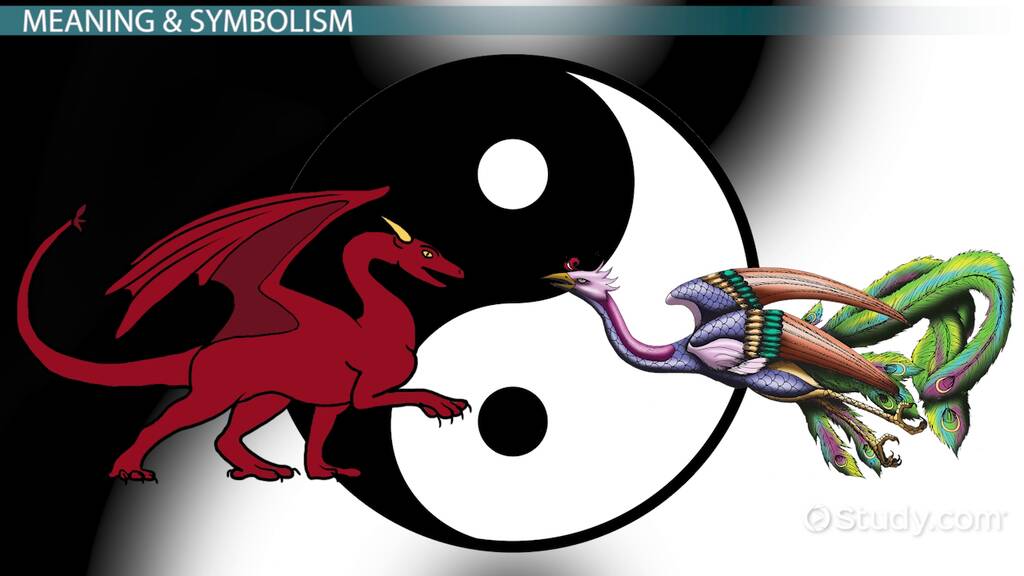Dragons and phoenixes are two creatures that hold a significant place in Chinese culture, mythology, and art. Dragons were believed to rule the water and were associated with fertility, power, and strength, while phoenixes were considered messengers of good fortune and resurrection. Physically, dragons have long, serpentine bodies, sharp claws, and wings and are portrayed in shades of green, blue, red, or gold. Phoenixes are bird-like with colorful crests and tails resembling a peacock’s and are depicted in shades of red, yellow, and orange. Both these creatures have their own symbolic meanings and mythological stories, making them an essential part of Chinese mythology today.
Introduction
In Chinese mythology, dragons and phoenixes are two of the most revered and popular creatures. They are often depicted in artwork and literature, and they hold a special place in Chinese culture. While both creatures have some similarities, they are also unique in their own ways. In this article, we will take a comparative look at dragons and phoenixes and explore their differences and similarities.
Origins
The origins of dragons in Chinese mythology can be traced back to the earliest Chinese civilization, the Shang Dynasty (1600-1046 BCE). Dragons were believed to be the rulers of the water and were associated with fertility, power, and strength. They were believed to be benevolent creatures and were often worshipped.
Phoenixes, on the other hand, have their roots in ancient Chinese legends and mythology. The earliest known use of the phoenix as a symbol dates back to the Zhou Dynasty (1046-256 BCE). Phoenixes were believed to be messengers of good fortune and were associated with rebirth, resurrection, and immortality.
Physical Characteristics
Dragons and phoenixes differ in their physical characteristics. Dragons are typically depicted as fearsome, winged creatures with long, serpentine bodies, sharp claws, and a fierce expression. They are usually portrayed in shades of green, blue, red, or gold.
Phoenixes, on the other hand, are depicted as elegant, bird-like creatures with a long, graceful neck, a colorful crest, and a tail that resembles a peacock’s. They are typically depicted in shades of red, yellow, and orange.
Symbolism
Both dragons and phoenixes have symbolic meanings in Chinese culture. Dragons represent good luck, prosperity, power, and strength. They are also associated with the element of water and are believed to have the power to control rain and floods. As such, they are often depicted in Chinese art to symbolize wealth and success.
Phoenixes, on the other hand, represent renewal, resurrection, and immortality. They are often associated with the element of fire and are believed to have the power to detoxify anything they touch. As such, they are often depicted in Chinese art to symbolize new beginnings and fresh starts.
Mythological Stories
Dragons and phoenixes feature prominently in many Chinese mythological stories. One popular legend tells the story of a dragon that lived in a lake and caused flooding every time it got angry. A wise man was able to calm the dragon down by offering it a pearl. From then on, the dragon guarded the pearl and caused no more flooding.
Another popular legend tells the story of a phoenix that was captured by an evil emperor and forced to live in a cage. The phoenix was eventually rescued by the goddess of mercy, who helped it escape and fly away to freedom.
Conclusion
In Chinese mythology, dragons and phoenixes are two of the most revered and beloved creatures. While dragons are associated with power and strength, phoenixes are associated with renewal and rebirth. Both creatures have their own unique symbolism and characteristics, making them an essential part of Chinese culture and mythology. Ultimately, dragons and phoenixes are a testament to the rich and diverse mythology of China, and their legacy continues to inspire and captivate people around the world today.
